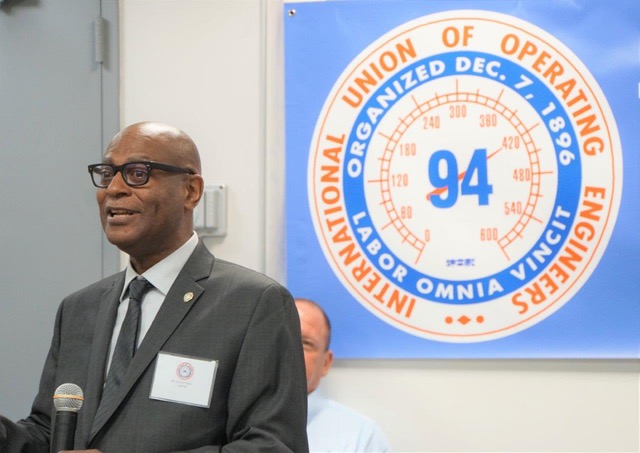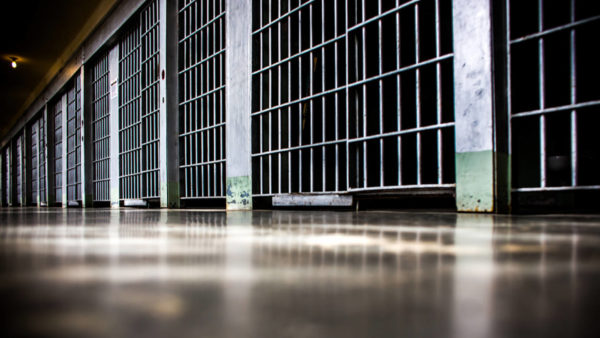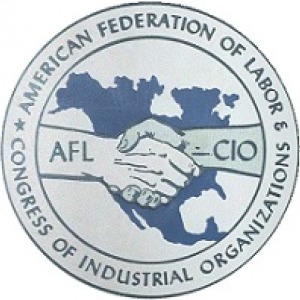New York, NY – As the earth continues to heat up due to accelerating climate change, New York’s Local Law 97 is aimed at mitigating even more harmful greenhouse gasses from NYC’s vast commercial and residential buildings.
IUOE Local 94 members operate many of the iconic commercial towers located around town. The union recently hosted a panel discussion to hear from engineers, city officials and building owners about the impact Local Law 97 will have on operations.

In 2019, the City Council passed the law, which then Mayor Bill de Blasio signed, as part of the Climate Mobilization Act. According to the Urban Green Council, the law’s purpose is to place carbon caps on most buildings larger than 25,000 square feet — roughly 50,000 residential and commercial properties across the five boroughs. The caps start in 2024, and will become more stringent over time, eventually reducing emissions 80-percent by 2050.
Howard Styles is Local 94’s training director, and also serves on the Local Law 97 advisory board. He opened the panel discussion by saying there was no better way to kickoff a discussion about Local Law 97 than at the local’s training center. The training program got underway back in 1986, is accredited by the EPA, the city’s Department of Environmental Conservation and the FDNY — and has trained thousands of operating engineers over the last 36 years. Workers who complete the three-year apprenticeship program are granted 19 college credits at CUNY’s New York City College of Technology.
Local 94 Business Manager Kuba Brown said the collaboration between labor and management has a produced significant advancements in the industry and will only continue to do so.
Realty Advisory Board head Howard Rothschild dismissed the idea that labor and management “don’t get along” saying, “nothing could be further from the truth.”
“It’s really together that we work in partnership for the benefit of the membership and the industry,” he said. “This training center and fund is really a testament to all that.”
Bill Ferrell, who used to write for the New York Daily News, and now writes the local’s monthly newsletter, had the honor of introducing the panel’s moderator, Greg David, who spent 35 years as a columnist and editor at Crain’s NY Business.
The panel represented a diverse mix of city representatives, a property owner and engineer. David asked Samuel Man, Senior Policy Advisor at the Mayor’s Office of Climate and Environmental Justice, to provide the panel with an overview of Eric Adams’ approach to combatting climate change.
Man said the administration is committed to leading a just and equitable transition to a carbon-neutral city, which requires partnerships with property owners and unionized operating engineers.
“Infrastructure is a big focus of this administration…and what do I mean by infrastructure? Waterfronts, parks, waste management. In terms of waterfront protection — fortifying them against future storms, and not just hardening them, but making them more resilient, making them more responsive — being able to absorb some of the impact from flooding and storm surges,” said Man.
He added, “We want to increase the prevalence of good paying green jobs. We want to reduce traffic. Last but not least, make the city more resilient — in terms of storm water, flooding, surges, making sure that we are hardened and we’re ready and prepared to address climate change.”
Carl Ian Graham is the Deputy Director of Building Emissions at the Department of Buildings. David asked him about his his day-to-day implementing Local Law 97.
According to Graham, the city is requiring a 40-percent reduction in emissions by 2030 and 80-percent by 2050. He compared his day-to-day to a puzzle, saying that there are a lot of pieces that have to be sorted and figured out.
“Our day to day for the past couple of years has been about how those pieces fit together and how they are going to work in concert to achieve these goals, ultimately the goal is to get carbon emissions down,” he said.
One of those pieces has to be the delivery of renewable energy to the grid, which the state is ramping up by recently announcing the finalization of contracts for two major wind farms off Long Island’s South Shore.
“Transitioning for that future where we do have a lot more renewable on the electric grid, being ready to make those buildings switch. Those who can and are able to make that transition to an all-electric is going to be important,” he added. “The leaders in the industry, like the Rudins and SL Greens and the others out there who are forging forward and have been doing it for a long time, continue to have them lead that market. These are pieces that we think about on a daily basis — try to make this law not just about collective penalties and setting limits but really about transforming the marketplace through the law.”
James Hollywood is Chief Engineer for SL Green Realty Corp., which as of December 2019, owned 43 properties totaling more than 14 million square feet in New York City. Hollywood got his start in the early days of Local 94’s training center on West 44th Street between 8th and 9th Avenues.
David asked him about One Vanderbilt — SL Green’s flagship supertall structure at 1.7 million square feet in Midtown Manhattan — specifically its energy mix and how will the new local law impacts operations.
According to Hollywood, it’s a gas-only building thanks to 10 six million BTU boilers that can produce secondary heat. But to meet the directives of the new local law — the building also hosts co-generations, gas engines, which work like jet engines.
“When you are doing co-generation, the name of the game is hiding the hot water. We have to do something else with it, otherwise we are just generating and we’ll be fined. So, we’ll wait and see how that goes. As far as our portfolio goes, we feel like we are in great shape,” Hollywood said.
Hollywood also expressed his concerns about Local Law 97 and how it applies to One Vanderbilt. There is nothing in the law, he said, that applies to high energy tenants such as data centers. He also said there’s no specification related to operating hours. Hollywood said he wants to make sure SL Green is receiving credit for its co-generation installation.
“I don’t want to be penalized as if I’m burning number six fuel oil like I was 30 years ago,” he added.
Hollywood also talked about a whole new dimension of energy production at One Vanderbilt.
“Walking into One Vanderbilt was a breath of fresh air. I sit above Grand Central Terminal. I take 13,600 volts from ConEd direct to my 17th floor. We craned six ConEd transformers up to my 17th floor and we have them sitting air cooled on the north side of the building, and that’s where my switchgear room is. Efficiency is great because now we have all of our power almost to the middle of the building — we’re feeding up and down,” Hollywood said.
Rudin Management Company owns 35 properties in New York City. Gene Boniberger is Senior VP of Operations.
According to Boniberger, the portfolio ranges from, at least on the commercial side, buildings that were built in the mid-1950s through the late 2000s. He noted the main challenge in complying with the new law is tenants, which, ironically, contribute to the older buildings having better Energy Star scores because the tenants aren’t producing a lot of energy.
“We have buildings in the mid-1950s vintage that are scoring in the high 80s Energy Star, but when you walk around inside one of those buildings, it’s a typical office — a guy or woman in the office with a computer shares a printer with a couple of people. But you walk into a building like 3 Times Square — there are traders with four monitors on the desks and it’s operating 24/7,” Boniberger said.
He acknowledged that Rudin owns three properties that will face some sort of fine, stemming from Local Law 97. One of them is 345 Park Ave— Rudin’s 1.8 million square feet flagship building whose major tenants include the NFL, KPMG and Blackstone. It’s over the emission limit because it produces over 2,000 hours of overtime of air conditioning a year.
But then there are a bunch of buildings in the middle, between the two ends of the energy production spectrum. The worst energy performing building, however, is 32 6th Avenue, which houses data centers. It’s a one-million-square-foot building, fully electrical, although steam heat represents about three-percent of the GHG [greenhouse gases] output. According to Boniberger, the base building core represents about six percent of the total energy use, while the rest of the output is generated from tenants.
That building, Boniberger said, is going to cost Rudin about $3 million in fines starting in 2025. Between 2025 and 2030 the fines will be $14 million. But the hope is that as the rest of Rudin’s grid becomes greener, the fines will diminish.
“[We want to] spend that $14 million, and invest in the other properties and keep lowering the emissions footprint on a portfolio basis,” he said



